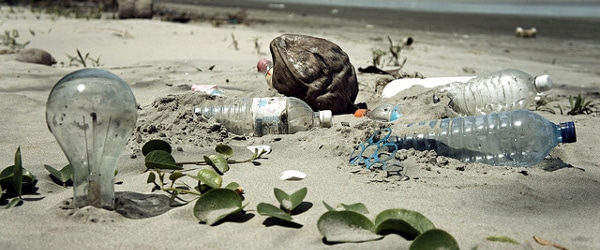10 Handy Tips to Help Keep Your PCRs Contamination Free

PCR contamination can be your worst nightmare if you are not able to figure out the source of the bands in your negative control. Initially, when I had to setup PCRs, contamination was my main problem and it remained a mystery for a while, as no matter how many times I repeated it with a new set of everything, I was not able to get rid of it. After a lot of trial and error, I finally managed to solve the problem. So here are the steps I followed to prevent PCR contamination.
1. Wear Gloves that Fit Like a Second Skin
I used to wear small size gloves since my correct size (XS) was not available. This became major source of contamination since my gloves used to touch the tip of PCR tubes, despite the fact that my fingers were away from it. So make sure that the gloves you are using fit you properly. As gloves are a major source of contamination since they are in direct contact with tubes you should change them regularly.
2. Always Wipe your Hands and Workbench with 70% Ethanol Before Starting Your PCR Reaction
Our skin scrapings have nucleases that can affect our PCR reactions. Nucleases such as DNAses digest your DNA, which can lead to negative results. If you’re not getting any DNA bands in your reaction it could be because of nuclease contamination. To avoid contaminating your PCRs with nucleases (or indeed other sources of contamination such as bacteria) keep your hands and bench sterile by wiping thoroughly with 70% ethanol. It is also best to wipe your pipettes, tip racks and mini coolers before using them.
3. Hold the PCR Strip/Tubes at the Bottom or Middle While Adding Reaction Components
This is because while setting up a reaction you need to touch several racks, piece of equipment and vials. You cannot always be sure that all the vials/tubes are sterile on the outside, especially as some have been sitting on ice. If you are touching your PCR tube top with your possibly contaminated fingers, the contamination (dust/nucleases/bacteria etc.) can reach your reaction when you mix the components using a pipette or mini spin. I believe this is an important practice as this simple trick greatly reduced the appearance of DNA bands in my negative control reaction.
4. Aliquot Your Reagents
It is best to fill ddH2O water in 1 ml or 1.5 ml screw cap tubes and autoclave at 15 lbs for 15 minutes. This way you can use one tube per PCR setup and be confident that your water is not causing contamination, since this strategy minimises the exposure of autoclaved water to aerosols. You should also aliquot other reagents (where possible) including buffers, polymerases, dNTPs, MgCl2 and primers; so that if one aliquot gets contaminated you haven’t ruined the whole batch.
5. Close Tube Caps Carefully and Slowly
While using PCR strips for setting up a reaction, close the strip caps carefully and slowly. If you hurry at this step, there is a possibility that the tube contents might spill outside. Also, although the caps may look closed, sometimes they might not be completely closed. This leads to loss of water by evaporation when the block is heated, which can cause alteration in the concentrations of reaction mix and your reaction can fail because as high concentration of dNTPs can inhibit amplification1. Even if the reaction works, the conditions are not the same as those that gave you results during optimization and therefore your results are not consistent.
6. Always Use Sterile Tips for Setting up PCR Reactions
Using filter tips is recommended for these sensitive reactions but not mandatory. Filter tips have aerosol barriers which prevent contamination from air and within the tip while pipetting. Also allot specific tip boxes for PCR only.
7. Mix the Contents Slowly and Carefully
This prevents the formation of bubbles and aerosols. You can read more on how to avoid bubbles in our article Mischief in the Mastermix: Bothersome Bubbles.
8. Change Your Tips
This may seem obvious but don’t forget to change the tips each time you add a different reagent to the mix and ensure you do this also when aliquoting, to avoid cross contamination.
9. Wear a Clean Lab Coat
When it comes to your lab coat you should always wear it and try to keep it as clean as possible. Personal protective equipment is there to protect your experiments from you as well as to protect you from your experiments. Ideally your department will have facilities for lab coat cleaning as you don’t really want to be taking it home and putting your reagent splattered coat in your own machine.
10. Keep Your PCR Reagents and Consumables Separate
Store all the PCR related tubes and vials separately from other reagents and consumables in the lab. For example, keep tubes and strips for PCR in a separate container and use those only for PCR. If possible have a different freezer/fridge location for pre-PCR reagents and post-PCR reactions.
Hopefully this helps you solve contamn (that is our lab nickname for contamination) problems and if you have any additional tips please leave them in the comments below.
References
1. Henegariu, O., et al. (1997) Multiplex PCR: Critical Parameters and Step-by-Step Protocol. Biotechniques. 23:504–511.